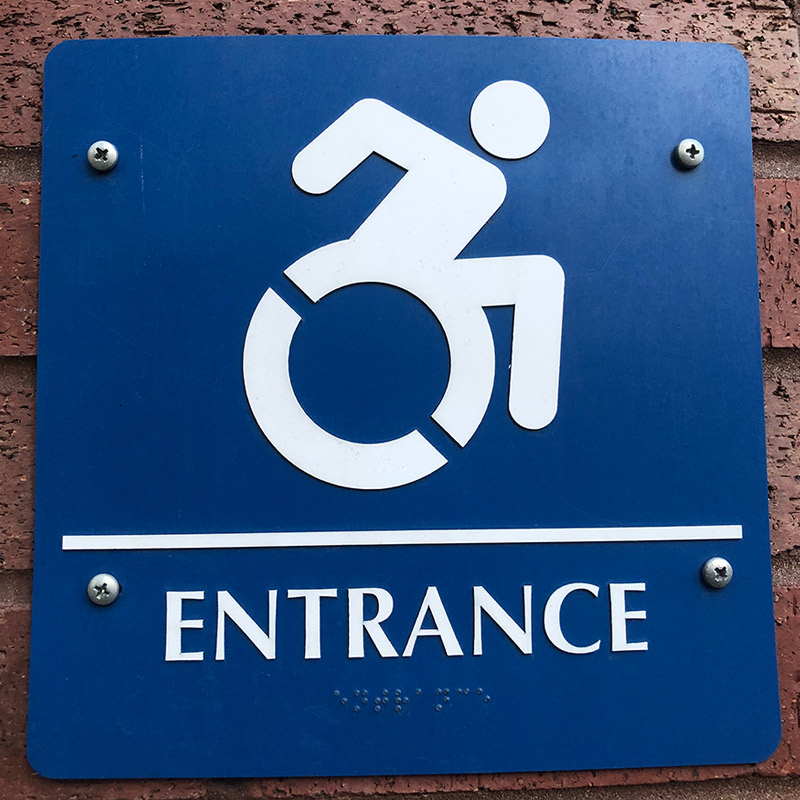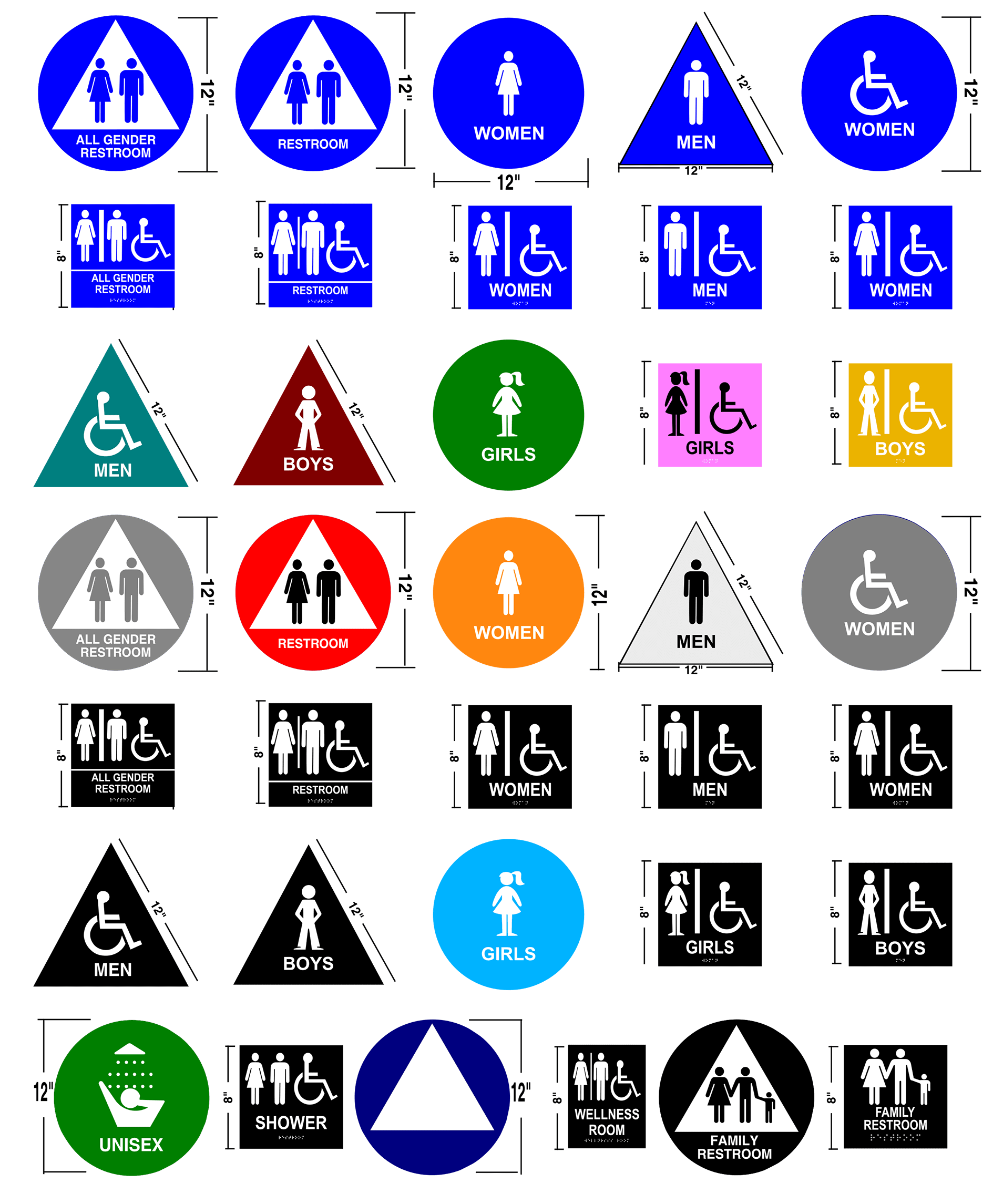The Function of ADA Signs in Following Access Standards
The Function of ADA Signs in Following Access Standards
Blog Article
Discovering the Trick Attributes of ADA Indications for Boosted Access
In the world of availability, ADA signs offer as silent yet effective allies, making certain that rooms are accessible and comprehensive for individuals with specials needs. By integrating Braille and tactile components, these indicators break barriers for the aesthetically damaged, while high-contrast color systems and understandable fonts provide to varied aesthetic requirements.
Importance of ADA Compliance
Making certain compliance with the Americans with Disabilities Act (ADA) is crucial for promoting inclusivity and equal gain access to in public rooms and work environments. The ADA, established in 1990, mandates that all public centers, employers, and transport services accommodate people with handicaps, guaranteeing they delight in the same legal rights and possibilities as others. Conformity with ADA criteria not just satisfies legal commitments yet additionally boosts a company's reputation by demonstrating its commitment to diversity and inclusivity.
One of the essential aspects of ADA compliance is the implementation of accessible signs. ADA indications are designed to ensure that people with specials needs can quickly navigate via structures and rooms.
Additionally, adhering to ADA guidelines can mitigate the risk of prospective penalties and lawful repercussions. Organizations that fail to follow ADA guidelines might deal with penalties or legal actions, which can be both economically troublesome and harmful to their public picture. Hence, ADA conformity is integral to cultivating an equitable setting for everyone.
Braille and Tactile Aspects
The incorporation of Braille and responsive components into ADA signs personifies the concepts of ease of access and inclusivity. It is normally positioned below the matching message on signs to make certain that people can access the info without visual help.
Tactile elements extend beyond Braille and consist of elevated personalities and signs. These elements are developed to be discernible by touch, allowing individuals to determine space numbers, restrooms, departures, and various other essential locations. The ADA sets particular guidelines pertaining to the dimension, spacing, and positioning of these tactile elements to maximize readability and guarantee uniformity across different settings.

High-Contrast Color Pattern
High-contrast shade schemes play a crucial duty in improving the visibility and readability of ADA signs for individuals with visual impairments. These schemes are important as they make best use of the distinction in light reflectance between text and background, making certain that indicators are quickly discernible, even from a range. The Americans with Disabilities Act (ADA) mandates the usage of specific shade contrasts to fit those with restricted vision, making it an important facet of compliance.
The efficiency of high-contrast colors hinges on their capability to stick out in various illumination problems, including dimly lit settings and areas with glow. Generally, dark message on a light background or light message on a dark background is utilized to attain optimal contrast. Black text on a yellow or white history offers a plain aesthetic difference that aids in quick recognition and understanding.

Legible Fonts and Text Size
When thinking about the style of ADA signs, the selection of legible font styles and ideal message dimension can not be overemphasized. These components are crucial for making sure that indications come to individuals with visual problems. The Americans with Disabilities Act (ADA) mandates that fonts should be not italic and sans-serif, oblique, script, highly decorative, or of unusual type. These demands assist make sure that the text is conveniently understandable from a range which the personalities are appreciable to diverse target markets.
According to ADA guidelines, the minimal text elevation must be 5/8 inch, and it ought to raise proportionally with checking out distance. Uniformity in text dimension contributes to a natural aesthetic experience, helping people in browsing settings successfully.
Moreover, spacing in between lines and letters is index essential to readability. Appropriate spacing prevents personalities from showing up crowded, enhancing readability. By sticking to these standards, developers can significantly enhance accessibility, guaranteeing that signs serves its designated objective for all individuals, despite their aesthetic abilities.
Reliable Placement Techniques
Strategic placement of ADA signs is necessary for making best use of availability and making certain conformity with legal criteria. ADA standards specify that signs should be placed at an elevation in between 48 to 60 inches from the ground to ensure they are within the line of sight for both standing and seated people.
In addition, indications should be placed adjacent to the lock side of doors to enable very easy identification prior to entrance. This placement aids individuals situate rooms and rooms without obstruction. In situations where there is no door, indications should be situated on the nearest adjacent wall surface. Consistency in sign positioning throughout a facility improves predictability, lowering complication and boosting general individual experience.

Final Thought
ADA indicators play a vital duty in promoting availability by incorporating features that attend to the needs of individuals with disabilities. Including Braille and tactile aspects makes certain important information is obtainable to the visually impaired, while high-contrast color systems and understandable sans-serif fonts improve exposure throughout numerous lights conditions. Effective placement strategies, such as suitable installing heights and calculated locations, further assist in navigating. These components jointly foster an inclusive setting, emphasizing the relevance of ADA conformity in ensuring equivalent accessibility for all.
In the realm of access, ADA signs offer as quiet yet effective allies, making sure that areas are redirected here accessible and inclusive for people with specials needs. The ADA, passed in 1990, mandates that all public facilities, employers, and transport solutions suit individuals with disabilities, ensuring they enjoy the same legal rights and possibilities as others. ADA Signs. ADA indicators are made to ensure that individuals with specials needs can conveniently browse through buildings and rooms. ADA standards state that signs should be installed article source at an elevation between 48 to 60 inches from the ground to guarantee they are within the line of view for both standing and seated people.ADA indicators play an important function in promoting availability by integrating attributes that deal with the demands of individuals with disabilities
Report this page